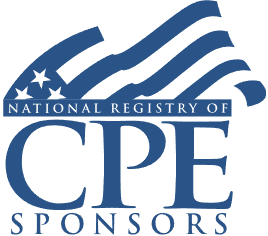1031 Exchanges: Identifying Property, Calculating Depreciation, Completing Form 8824, Tax Reform Changes

Welcome! Strafford is now BARBRI! The expert courses you know from the trusted global leader in legal education.
Course Details
- smart_display Format
On-Demand
- signal_cellular_alt Difficulty Level
Intermediate
- work Practice Area
Tax Preparer
- event Date
Tuesday, February 18, 2020
- schedule Time
1:00 p.m. ET./10:00 a.m. PT
- timer Program Length
110 minutes
-
BARBRI is a NASBA CPE sponsor and this 110-minute webinar is accredited for 2.0 CPE credits.
-
BARBRI is an IRS-approved continuing education provider offering certified courses for Enrolled Agents (EA) and Tax Return Preparers (RTRP).
This course will provide an overview of Section 1031, like-kind exchanges, so that both new and seasoned tax professionals, can better advise clients participating in these transactions. The panel will provide an overview of the components of LKEs including defining qualifying property, understanding critical dates, calculating the basis of property acquired, depreciating replacement property, how to complete Form 8824 and the effect of tax reform on these tax-saving devices.
Faculty

Professor Borden’s research, scholarship, and teaching focus on taxation of real property transactions and flow-through entities (including tax partnerships, REITs, and REMICs). He teaches Federal Income Taxation, Partnership Taxation, Taxation of Real Estate Transactions, and Unincorporated Business Organizations, and he is affiliated with the Dennis J. Block Center for the Study of International Business Law. His work on flow-through and transactional tax theory appears in articles published in law reviews including Baylor Law Review, University of Cincinnati Law Review, Florida Law Review, Georgia Law Review, Houston Law Review, Iowa Law Review, Tax Lawyer, and Virginia Tax Review, among others. His articles also frequently appear in leading national tax journals including Journal of Taxation, Journal of Taxation of Investments, Real Estate Taxation, and Tax Notes.

Mr. Brown has overseen the facilitation of more than 5,000 real and personal property exchanges with total values in excess of $3 billion. He works with the firm's specialty divisions and GC for parking title exchanges and multiple asset exchanges. Mr. Brown has trained over 7,500 attorneys, CPAs, REALTORS® and escrow officers and conducts in-house training on like-kind exchanges, teaches like-kind exchange continuing education courses and is a frequent legal, real estate and tax association speaker.
Description
A Section 1031 exchange is one of the most potent and beneficial tax-savings tools available to all taxpayers. Section 1031 allows a taxpayer to defer and possibly avoid the tax on the sale of certain property by buying other property. Although conceptually simple, making sure an exchange meets the requirements is critical. Taking cash out or purchasing lower-valued replacement property can cause recognition of some or all of the gain.
Recent tax reform changed the definition of qualified property. Personal property is no longer eligible for this deferred treatment, though the 45-day identification and 180-day exchange deadlines remain.
Listen as our panel of experts explains the types of Section 1031 exchanges, how to structure a compliant transaction, when and how partial tax is calculated on an LKE, the essential use of a qualified intermediary, and recent tax reform changes.
Outline
- Introduction and types of 1031 exchanges
- Tax reform changes
- Identifying replacement property
- Qualified intermediaries and avoiding constructive receipt
- Critical dates
- Boot and partial exchanges
- Depreciation methods
- Reporting: Form 8824
Benefits
The panel will review these and other notable issues:
- The effect of recent tax reform on Section 1031 exchanges
- Taxation of boot received in a like-kind exchange
- Meeting the time deadlines for Section 1031 exchanges
- Depreciation treatment of property received in exchange
NASBA Details
Learning Objectives
After completing this course, you will be able to:
- Determine the tax consequences of a 1031 exchange
- Identify appropriate depreciation methods for property received
- Decide when replacement property must be identified
- Ascertain eligibility of replacement property
- Field of Study: Taxes
- Level of Knowledge: Intermediate
- Advance Preparation: None
- Teaching Method: Seminar/Lecture
- Delivery Method: Group-Internet (via computer)
- Attendance Monitoring Method: Attendance is monitored electronically via a participant's PIN and through a series of attendance verification prompts displayed throughout the program
- Prerequisite: Three years+ business or public firm experience preparing complex tax forms and schedules, supervising other preparers or accountants. Specific knowledge and understanding of pass-through taxation, including taxation of partnerships, S corporations and sole proprietorships, qualified business income, net operating losses and loss limitations; familiarity with net operating loss carry-backs, carry-forwards and carried interests.

Strafford Publications, Inc. is registered with the National Association of State Boards of Accountancy (NASBA) as a sponsor of continuing professional education on the National Registry of CPE Sponsors. State boards of Accountancy have final authority on the acceptance of individual courses for CPE Credits. Complaints regarding registered sponsons may be submitted to NASBA through its website: www.nasbaregistry.org.

Strafford is an IRS-approved continuing education provider offering certified courses for Enrolled Agents (EA) and Tax Return Preparers (RTRP).
Unlimited access to premium CLE courses:
- Annual access
- Available live and on-demand
- Best for attorneys and legal professionals
Unlimited access to premium CPE courses.:
- Annual access
- Available live and on-demand
- Best for CPAs and tax professionals
Unlimited access to premium CLE, CPE, Professional Skills and Practice-Ready courses.:
- Annual access
- Available live and on-demand
- Best for legal, accounting, and tax professionals
Unlimited access to Professional Skills and Practice-Ready courses:
- Annual access
- Available on-demand
- Best for new attorneys
Related Courses

Redemptions of Partnership Interests: Sections 736(b) vs. 736(a)
Friday, October 31, 2025
1:00 p.m. ET./10:00 a.m. PT

Multistate Tax Treatment of Multi-Tier Partnerships: Ingesting PTET in a Multi-Tier Entity
Friday, September 19, 2025
1:00 p.m. ET./10:00 a.m. PT

IRA Distributions and RMDs: Minimizing Taxes and Meeting SECURE 2.0 Requirements
Available On-Demand

Avoiding Gift and Estate Audit Triggers: Anticipating Audit Issues, IDRs, and Appeals
Tuesday, September 9, 2025
1:00 p.m. ET./10:00 a.m. PT
Recommended Resources
How CPE Can Bridge the Gap Between What You Know and What You Need to Know
- Career Advancement